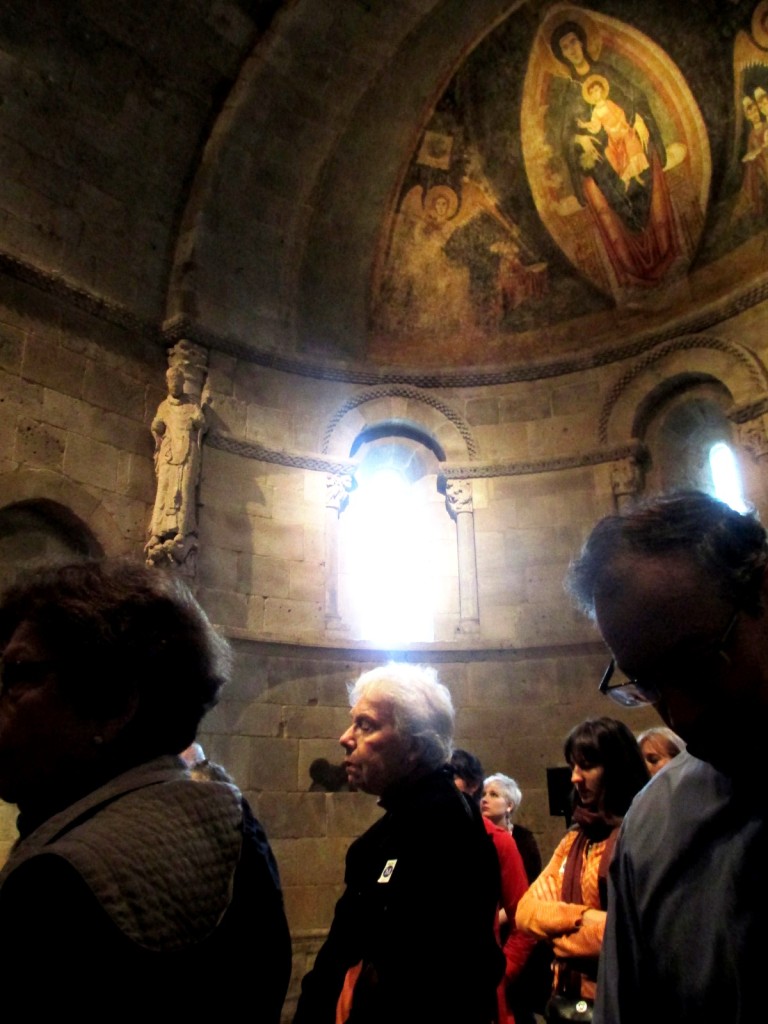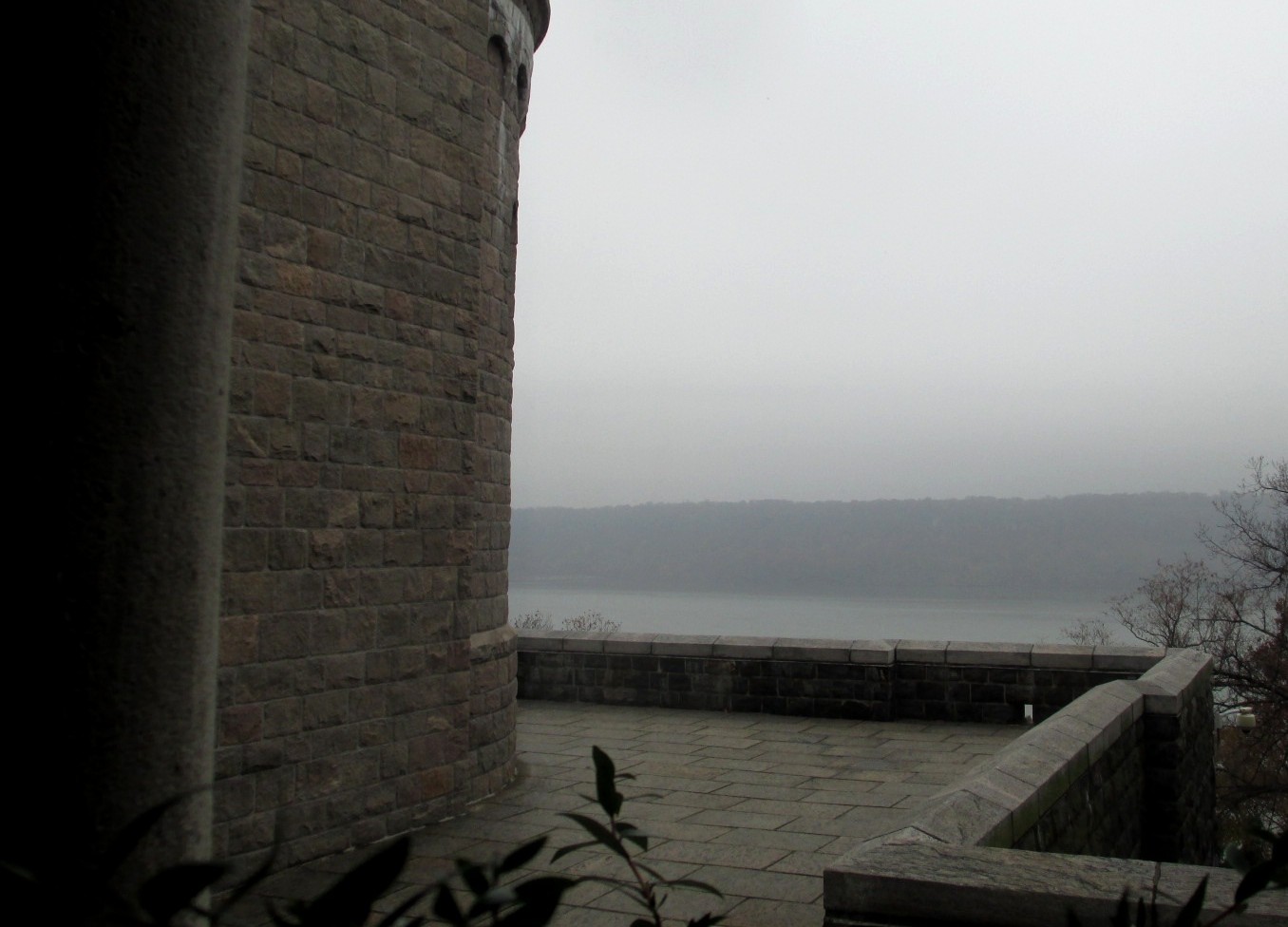I’ve already suggested visiting the Cloisters, but now I have to urge you: visit the Cloisters before December 8. If you do, you’ll be able to visit an installation which is one of the coolest things I’ve ever experienced.
Janet Cardiff, a multimedia artist who I’m definitely going to look up and learn more about, created a piece called The Forty Part Motet. It’s a recording of Thomas Tallis’s 16th century motet for forty voices, but it’s not your typical choral recording. It is split into forty separate recordings, representing the forty voices, across forty speakers arranged in a circle inside a 12th century chapel at the Cloisters.
According to the exhibit notes, this is the first time the piece has been presented anywhere besides a neutral gallery space (which, from a Youtube video I found, seems not to be true), but after hearing it in the chapel I can’t imagine why it was ever presented anywhere else. The motet is made to fill those stone walls, and anything else would just diminish the experience.
I visited the installation with a choir friend, because our choir will be performing the motet in the spring, and we were so enthralled that we listened to the piece straight through twice. I moved around inside the chapel, sometimes standing by one speaker, sometimes another, and sometimes standing in the center and hearing the forty voices in balance. The piece would be stunning however it was presented, but this format, where you could choose to focus in on a particular voice within the wall of sound and follow it through measures, notice when it fell silent, and hear it pick up again, was fascinating. It felt at times like being part of the choir, which is an experience I’m lucky to have regularly but must be novel for non-singers.

As we left, my friend and I discussed how the piece differed from a live performance. A live performance, even if it’s recorded, only happens once. The experience of listening to a recording is not the same as being at a live concert; the sound is flatter, the voices more melded together rather than individual. Cardiff’s motet is different. It’s still a recording—the swell will always happen at exactly the same moment, with the same build; the tired singer will take a catch breath at exactly the same moment.
But the forty voices are kept distinct, and the performance is never the same twice, just like a real concert, because the listener is never exactly the same. Unless one stands in exactly the same place, or plots a path and follows it precisely, the music one hears will be different each time. And even if one were to do that, the people in the room would be different, changing the sound—and the experience—in tiny ways. This is a piece of art wherein the observer charts his or her own path and emerges with a unique experience.
It requires more activity on the part of the listener than a live concert, and while I think that nothing is quite as magical as a live performance, this comes close. I suppose the only thing better would be forty singers standing in that chapel allowing listeners to walk right up to them—and even then, you can’t ask forty singers to sing this motet all day for weeks at a time so listeners can come back and hear it over and over again, which is part of the appeal.
Go to the Cloisters before the exhibit leaves after December 8. If you absolutely can’t make it, read the New York Times piece about it, and look up a recording of the piece. And then after you’ve done that, go, because you’ll want to.
ETA: For another look at the piece, check out this article in Chorus America.


Leave a Reply